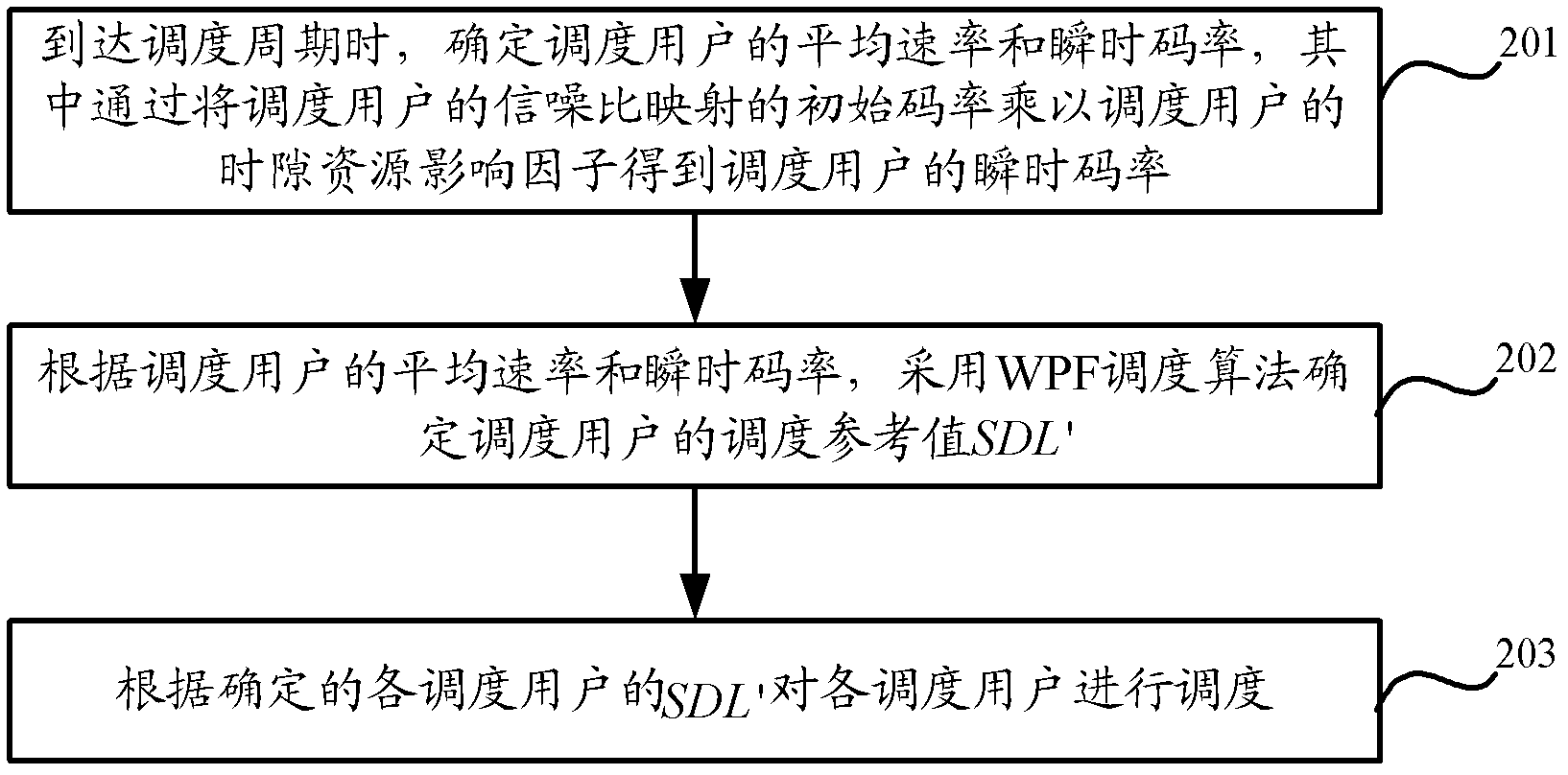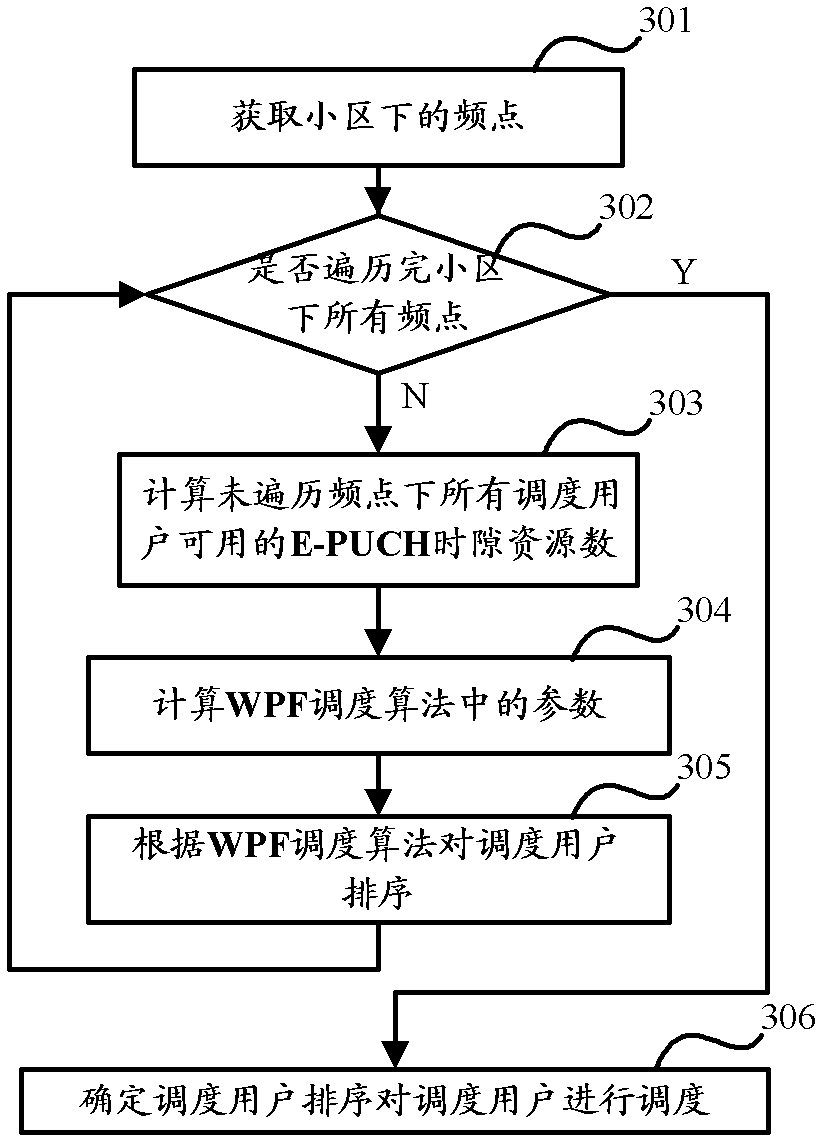User scheduling method and device
A technology for user scheduling and scheduling algorithm, applied in digital transmission systems, electrical components, and error prevention. It can solve problems such as wasted time slot resources and no improvement in air interface throughput. The effect of scheduling priority
- Summary
- Abstract
- Description
- Claims
- Application Information
AI Technical Summary
Problems solved by technology
Method used
Image
Examples
Embodiment Construction
[0026] The user scheduling method and device applied to the APE-supporting TD-SCDMA system provided by the present invention will be described in more detail below in conjunction with the accompanying drawings and embodiments.
[0027] In the TD-SCDMA system, after the introduction of the APE feature, the APE user supports multiple uplink time slots, and its average rate is relatively high. According to the existing scheduling method, since the instantaneous rate is determined only according to the signal-to-noise ratio of the channel quality, its participation in The SDL value of the scheduling order decreases instead, resulting in a reduction in its scheduling opportunities, resulting in no increase in the air interface rate.
[0028] In the TD-SCDMA system, the WPF scheduling algorithm needs to be based on the user's instantaneous code rate. After the system introduces the APE feature, for different users, the factors that determine the instantaneous code rate include not on...
PUM
 Login to View More
Login to View More Abstract
Description
Claims
Application Information
 Login to View More
Login to View More - R&D
- Intellectual Property
- Life Sciences
- Materials
- Tech Scout
- Unparalleled Data Quality
- Higher Quality Content
- 60% Fewer Hallucinations
Browse by: Latest US Patents, China's latest patents, Technical Efficacy Thesaurus, Application Domain, Technology Topic, Popular Technical Reports.
© 2025 PatSnap. All rights reserved.Legal|Privacy policy|Modern Slavery Act Transparency Statement|Sitemap|About US| Contact US: help@patsnap.com



